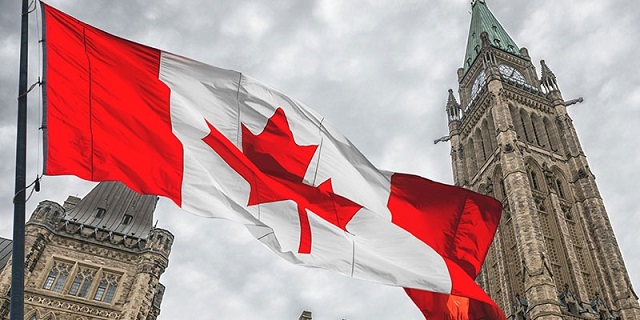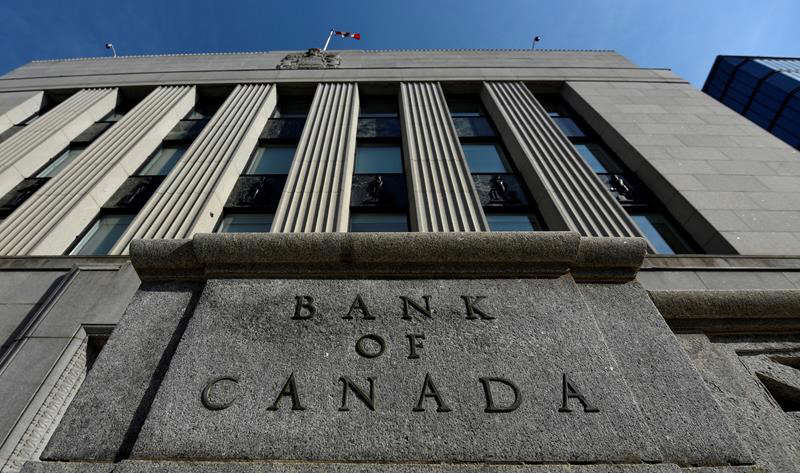Economy
Housing policy should focus on closing the demand-supply gap, not inducing demand or stifling supply

From the Fraser Institute
FEDERAL REFORMS TO IMPROVE HOUSING AFFORDABILITY
BY JOSEF FILIPOWICZ AND STEVE LAFLEUR
Canada’s declining housing affordability reflects a large, worsening imbalance between housing demand and housing supply.
Few policy areas are gaining as much attention in Canada as housing. This is unsurprising, given that Canada has the largest gap between homes prices and incomes among G7 nations (OECD, 2023) and rents continue to rise in most cities (Statistics Canada, 2023a). As eroding housing affordability has expanded to more parts of Canada, demands for policy solutions have grown beyond local jurisdictions, pressuring federal decisionmakers to act.
First, this essay offers a diagnosis of the issue—a large, growing imbalance between housing demand and supply. Second, it discusses federal policies affecting housing demand, urging better coordination and restraint amid tight supply conditions. Third, it discusses the federal government’s less-direct—though still important—options to improve housing supply.
Guiding principles: do no more harm, and close the demand-supply gap
Canada’s declining housing affordability reflects a large, worsening imbalance between housing demand and housing supply. This is evident when comparing trends in population growth and housing completions. Figure 1 charts these two metrics between 1972 and 2022. In recent years, Canada’s population growth has accelerated, while the number of homes completed has declined relative to the 1970s. 1

Policy efforts should focus on closing the demand-supply gap. The federal government should first ensure that it is not exacerbating the problem, either by stoking demand or by stifling supply, and second by both reviewing all existing policies through a supply-demand lens while implementing tailored policies aimed at closing the demand-supply gap.
Demand-side considerations for federal housing policy
Though all levels of government influence both housing demand and supply, the federal government’s policy levers pertain more directly to demand. They do so in two important ways.
First, federal policy influences population growth. As Canada’s birth rate has declined, population growth has been driven primarily by immigration (including both permanent and temporary residents) (Statistics Canada, 2023c). Though provinces may influence immigration decisions, the federal government establishes annual targets (where applicable) and admission criteria (Filipowicz and Lafleur, 2023).
Second, the federal government influences households’ ability to pay for housing. Policies for home buyers including the First-Time Home Buyers’ Tax Credit and the First Home Savings Account, which, combined with the Home Buyers’ Plan, enable the accumulation of tax-free savings for a down payment. 2 Federal policies for homeowners include the exemption from capital gains taxation on the sale of primary residences, loan insurance through the Canada Mortgage and Housing Corporation, and residential mortgage underwriting through the Office of the Superintendent of Financial Institutions. Combined, these policies influence the relative attractiveness of housing as an investment.
Without adequate supply, these policies result in higher prices, rather than greater affordability. The federal government should review all existing or proposed policies directly or indirectly impacting housing demand. Further, it should adopt the following two policy approaches:
• Stronger consideration of housing supply dynamics when determining short, medium and long-term immigration targets or visa issuance. For example, supply metrics (e.g. housing starts, completions, and rental vacancy rates) should help inform multi-year plans or criteria for permanent and non-permanent resident admissions.
• Refraining from introducing new demand-inducing subsidies, such as tax credits or subsidies to homebuyers and homeowners, while comprehensively reviewing the impact of existing subsidies.
Supply-side considerations for federal housing policy
Housing supply in Canada is influenced primarily by provincial and local governments. Decisions concerning land-use and growth planning—including for lands owned by the federal government—largely rest with these levels of government, meaning housing construction projects cannot be realized without first aligning with, and receiving approval from, local authorities. Federal policies aiming to grow the housing supply must account for this.
Federal influence on housing supply can be divided into four policy types. First are fiscal transfers. Every year the federal government transfers billions of dollars to municipalities to fund infrastructure. In some cases, funding is permanent and based on federal-provincial agreements.3 In other cases, funding is negotiated for specific projects.4
Second, the federal government also funds the development of non-market housing. Programs such as the National Co-Investment Fund and Rapid Housing Initiative offer low-interest or forgivable loans, and direct funding, respectively, to organizations building or acquiring non-market housing.
Third, federal tax policies and programs influence the financial feasibility of homebuilding. For example, federal sales and capital gains taxes apply differently to different housing types, such as condominiums, rental buildings and accessory dwelling units (e.g. basement or laneway suites).5
Further, federal programs such as the Rental Construction Financing Initiative and multi-unit mortgage loan insurance products influence project feasibility by providing rental builders with low-interest loans or reduced premiums.
Fourth, the federal government’s primary responsibility for immigration gives it significant influence over the mix of skills prioritized in application screening, affecting the construction sector’s ability to recruit workers. Indeed, the share of immigrants working in the construction sector was lower than that among Canada’s overall population in 2020 (BuildForce Canada, 2020), reflecting the longstanding selection preferences of federal immigration policy until more recent changes.6
The federal government should coordinate with local and provincial governments as it develops policies, avoiding the creation of additional barriers and duplication. Specifically, the following three approaches should inform federal efforts to improve housing supply:
• Tying all federal infrastructure funding to housing supply metrics such as housing stock growth, starts or completions, ensuring limited funds are directed to those regions facing the strongest growth pressures in a transparent fashion, while reducing administrative costs and jurisdictional overlap.
• Reviewing and reforming the tax treatment of all housing development, helping improve the feasibility of large- and small-scale projects Canada-wide.
• Further prioritizing skills related to homebuilding in immigration policies and eligibility criteria.
Conclusion
Faced with a widening gap between housing demand and supply, this essay focuses on the federal government’s influence on housing markets, offering five areas of policy action.
The most direct federal levers pertain to housing demand. Housing constraints should be weighed more heavily when setting immigration policy, including temporary immigration, and new demand-inducing policies such as homebuyer tax credits should be avoided, while existing policies should be reviewed.
Given the federal government’s less direct influence on housing supply, intergovernmental coordination is recommended. Limited transfer funding should follow local housing supply metrics, while the tax treatment of housing development could also be reformed, enabling a larger number of projects to be financially feasible. Lastly, immigration policies should emphasize skills required to build more housing.
Authors:
1 For more on the gap between population growth and housing completions, see Filipowicz (2023).
2 For a full list of incentives and rebates for homebuyers, see <https://www.cmhc-schl.gc.ca/consumers/home-buying/government-of-canada-programs-to-support-homebuyers>, as of February 5, 2023.
3 For example, the Canada Community-Building Fund (formerly the Gas Tax Fund) delivers approximately $2 billion annually to local governments.
It is governed by a series of federal-provincial agreements.
4 For example, the federal government has committed one-third of the capital funding required by the Surrey Langley SkyTrain. Similar agreements
are common for major transit infrastructure.
5 The federal government recently announced the removal of the goods and services tax on purpose-built rental housing, helping the feasibility
of this housing class. For more on the influence of federal taxation on rental housing, see Canadian Home Builders’ Association (2016).
6 Immigration, Refugees and Citizenship Canada changed screening processes in mid-2023, favouring trade occupations, among others. The full effects of these changes will become apparent with time.
Canadian Home Builders’ Association (2016). Encouraging Construction and Retention of Purpose-Built Rental Housing in Canada: Analysis of Federal Tax Policy Options. <https://www.evergreen.ca/downloads/pdfs/HousingActionLab/HAL_EncouragingConstructionAndRetention_FINAL.pdf> as of September 13, 2023.
Filipowicz (2023). Canada’s Growing Housing Gap: Comparing Population Growth and Housing Completions in Canada, 1972–2022.
Fraser Institute. <https://www.fraserinstitute.org/sites/default/files/canadas-growing-housing-gap-1972-2022.pdf>, as of February
5, 2024.
Filipowicz, Josef and Steve Lafleur (2023a). Getting Our Houses in Order: How a Lack of Intergovernmental Policy Coordination
Undermines Housing Affordability in Canada. Macdonald-Laurier Institute. <https://macdonaldlaurier.ca/getting-our-houses-in-order-how-a-lack-of-intergovernmental-policy-coordination-undermines-housing-affordability-in-canada/>, as of February 5, 2024.
Immigration, Refugees and Citizenship Canada (2023). Express Entry Rounds of Invitations: Category-based Selection. <https://www.
canada.ca/en/immigration-refugees-citizenship/services/immigrate-canada/express-entry/submit-profile/rounds-invitations/category-based-selection.html>, as of September 15, 2023.
International Monetary Fund (2023). Report for the 2023 Article IV Consultation. [or Country Report: Canada]. <https://www.imf.
org/en/Publications/CR/Issues/2023/07/27/Canada-2023-Article-IV-Consultation-Press-Release-and-Staff-Report-537072> as of
September 13, 2023.
Organisation for Economic Cooperation and Development [OECD]. 2023. Housing Prices (indicator). DOI: 10.1787/63008438.
OECD. <https://data.oecd.org/price/housing-prices.htm>, as of February 5, 2023.
Statistics Canada (2023a). Table 34-10-0133-01. Canada Mortgage and Housing Corporation, average rents for areas with a population of 10,000 and over. <https://www150.statcan.gc.ca/t1/tbl1/en/cv.action?pid=3410013301>, as of February 5, 2023.
Statistics Canada (2023b). Table 34-10-0127-01. Canada Mortgage and Housing Corporation, vacancy rates, apartment structures of six units and over, privately initiated in census metropolitan areas. <https://www150.statcan.gc.ca/t1/tbl1/en/tv.action?pid=3410012701>, as of February 5, 2024.
Statistics Canada (2023c). Table 17-10-0008-01. Estimates of the components of demographic growth, annual. <https://www150.
statcan.gc.ca/t1/tbl1/en/tv.action?pid=1710000801>, as of March 2, 2023.
Economy
Affordable housing out of reach everywhere in Canada

From the Fraser Institute
By Steven Globerman, Joel Emes and Austin Thompson
According to our new study, in 2023 (the latest year of comparable data), typical homes on the market were unaffordable for families earning the local median income in every major Canadian city
The dream of homeownership is alive, but not well. Nearly nine in ten young Canadians (aged 18-29) aspire to own a home—but share a similar worry about the current state of housing in Canada.
Of course, those worries are justified. According to our new study, in 2023 (the latest year of comparable data), typical homes on the market were unaffordable for families earning the local median income in every major Canadian city. It’s not just Vancouver and Toronto—housing affordability has eroded nationwide.
Aspiring homeowners face two distinct challenges—saving enough for a downpayment and keeping up with mortgage payments. Both have become harder in recent years.
For example, in 2014, across 36 of Canada’s largest cities, a 20 per cent downpayment for a typical home—detached house, townhouse, condo—cost the equivalent of 14.1 months (on average) of after-tax income for families earning the median income. By 2023, that figure had grown to 22.0 months—a 56 per cent increase. During the same period for those same families, a mortgage payment for a typical home increased (as a share of after-tax incomes) from 29.9 per cent to 56.6 per cent.
No major city has been spared. Between 2014 and 2023, the price of a typical home rose faster than the growth of median after-tax family income in 32 out of 36 of Canada’s largest cities. And in all 36 cities, the monthly mortgage payment on a typical home grew (again, as a share of median after-tax family income), reflecting rising house prices and higher mortgage rates.
While the housing affordability crisis is national in scope, the challenge differs between cities.
In 2023, a median-income-earning family in Fredericton, the most affordable large city for homeownership in Canada, had save the equivalent of 10.6 months of after-tax income ($56,240) for a 20 per cent downpayment on a typical home—and the monthly mortgage payment ($1,445) required 27.2 per cent of that family’s after-tax income. Meanwhile, a median-income-earning family in Vancouver, Canada’s least affordable city, had to spend the equivalent of 43.7 months of after-tax income ($235,520) for a 20 per cent downpayment on a typical home with a monthly mortgage ($6,052) that required 112.3 per cent of its after-tax income—a financial impossibility unless the family could rely on support from family or friends.
The financial barriers to homeownership are clearly greater in Vancouver. But, crucially, neither city is truly “affordable.” In Fredericton and Vancouver, as in every other major Canadian city, buying a typical home with the median income produces a debt burden beyond what’s advisable. Recent house price declines in cities such as Vancouver and Toronto have provided some relief, but homeownership remains far beyond the reach of many families—and a sharp slowdown in homebuilding threatens to limit further gains in affordability.
For families priced out of homeownership, renting doesn’t offer much relief, as rent affordability has also declined in nearly every city. In 2014, rental rates for the median-priced rental unit required 19.8 per cent of median after-tax family income, on average across major cities. By 2023, that figure had risen to 23.5 per cent. And in the least affordable cities for renters, Toronto and Vancouver, a median-priced rental required more than 30 per cent of median after-tax family income. That’s a heavy burden for Canada’s renters who typically earn less than homeowners. It’s also an added financial barrier to homeownership— many Canadian families rent for years before buying their first home, and higher rents make it harder to save for a downpayment.
In light of these realities, Canadians should ask—why have house prices and rental rates outpaced income growth?
Poor public policy has played a key role. Local regulations, lengthy municipal approval processes, and costly taxes and fees all combine to hinder housing development. And the federal government allowed a historic surge in immigration that greatly outpaced new home construction. It’s simple supply and demand—when more people chase a limited (and restricted) supply of homes, prices rise. Meanwhile, after-tax incomes aren’t keeping pace, as government policies that discourage investment and economic growth also discourage wage growth.
Canadians still want to own homes, but a decade of deteriorating affordability has made that a distant prospect for many families. Reversing the trend will require accelerated homebuilding, better-paced immigration and policies that grow wages while limiting tax bills for Canadians—changes governments routinely promise but rarely deliver.
Banks
To increase competition in Canadian banking, mandate and mindset of bank regulators must change

From the Fraser Institute
By Lawrence L. Schembri and Andrew Spence
Canada’s weak productivity performance is directly related to the lack of competition across many concentrated industries. The high cost of financial services is a key contributor to our lagging living standards because services, such as payments, are essential input to the rest of our economy.
It’s well known that Canada’s banks are expensive and the services that they provide are outdated, especially compared to the banking systems of the United Kingdom and Australia that have better balanced the objectives of stability, competition and efficiency.
Canada’s banks are increasingly being called out by senior federal officials for not embracing new technology that would lower costs and improve productivity and living standards. Peter Rutledge, the Superintendent of Financial Institutions and senior officials at the Bank of Canada, notably Senior Deputy Governor Carolyn Rogers and Deputy Governor Nicolas Vincent, have called for measures to increase competition in the banking system to promote innovation, efficiency and lower prices for financial services.
The recent federal budget proposed several new measures to increase competition in the Canadian banking sector, which are long overdue. As a marker of how uncompetitive the market for financial services has become, the budget proposed direct interventions to reduce and even eliminate some bank service fees. In addition, the budget outlined a requirement to improve price and fee transparency for many transactions so consumers can make informed choices.
In an effort to reduce barriers to new entrants and to growth by smaller banks, the budget also proposed to ease the requirement that small banks include more public ownership in their capital structure.
At long last, the federal government signalled a commitment to (finally) introduce open banking by enacting the long-delayed Consumer Driven Banking Act. Open banking gives consumers full control over who they want to provide them with their financial services needs efficiently and safely. Consumers can then move beyond banks, utilizing technology to access cheaper and more efficient alternative financial service providers.
Open banking has been up and running in many countries around the world to great success. Canada lags far behind the U.K., Australia and Brazil where the presence of open banking has introduced lower prices, better service quality and faster transactions. It has also brought financing to small and medium-sized business who are often shut out of bank lending.
Realizing open banking and its gains requires a new payment mechanism called real time rail. This payment system delivers low-cost and immediate access to nonbank as well as bank financial service providers. Real time rail has been in the works in Canada for over a decade, but progress has been glacial and lags far behind the world’s leaders.
Despite the budget’s welcome backing for open banking, Canada should address the legislative mandates of its most important regulators, requiring them to weigh equally the twin objectives of financial system stability as well as competition and efficiency.
To better balance these objectives, Canada needs to reform its institutional framework to enhance the resilience of the overall banking system so it can absorb an individual bank failure at acceptable cost. This would encourage bank regulators to move away from a rigid “fear of failure” cultural mindset that suppresses competition and efficiency and has held back innovation and progress.
Canada should also reduce the compliance burden imposed on banks by the many and varied regulators to reduce barriers to entry and expansion by domestic and foreign banks. These agencies, including the Office of the Superintendent of Financial Institutions, Financial Consumer Agency of Canada, Financial Transactions and Reports Analysis Centre of Canada, the Canada Deposit Insurance Corporation plus several others, act in largely uncoordinated manner and their duplicative effort greatly increases compliance and reporting costs. While Canada’s large banks are able, because of their market power, to pass those costs through to their customers via higher prices and fees, they also benefit because the heavy compliance burden represents a significant barrier to entry that shelters them from competition.
More fundamental reforms are needed, beyond the measures included in the federal budget, to strengthen the institutional framework and change the regulatory mindset. Such reforms would meaningfully increase competition, efficiency and innovation in the Canadian banking system, simultaneously improving the quality and lowering the cost of financial services, and thus raising productivity and the living standards of Canadians.
-

 Focal Points2 days ago
Focal Points2 days agoCommon Vaccines Linked to 38-50% Increased Risk of Dementia and Alzheimer’s
-

 Business2 days ago
Business2 days agoLoblaws Owes Canadians Up to $500 Million in “Secret” Bread Cash
-

 Business22 hours ago
Business22 hours agoThe EU Insists Its X Fine Isn’t About Censorship. Here’s Why It Is.
-

 Dan McTeague2 days ago
Dan McTeague2 days agoWill this deal actually build a pipeline in Canada?
-

 Economy18 hours ago
Economy18 hours agoAffordable housing out of reach everywhere in Canada
-

 Censorship Industrial Complex2 days ago
Censorship Industrial Complex2 days agoUS Condemns EU Censorship Pressure, Defends X
-

 Banks2 days ago
Banks2 days agoTo increase competition in Canadian banking, mandate and mindset of bank regulators must change
-

 Business12 hours ago
Business12 hours agoThe Climate-Risk Industrial Complex and the Manufactured Insurance Crisis











